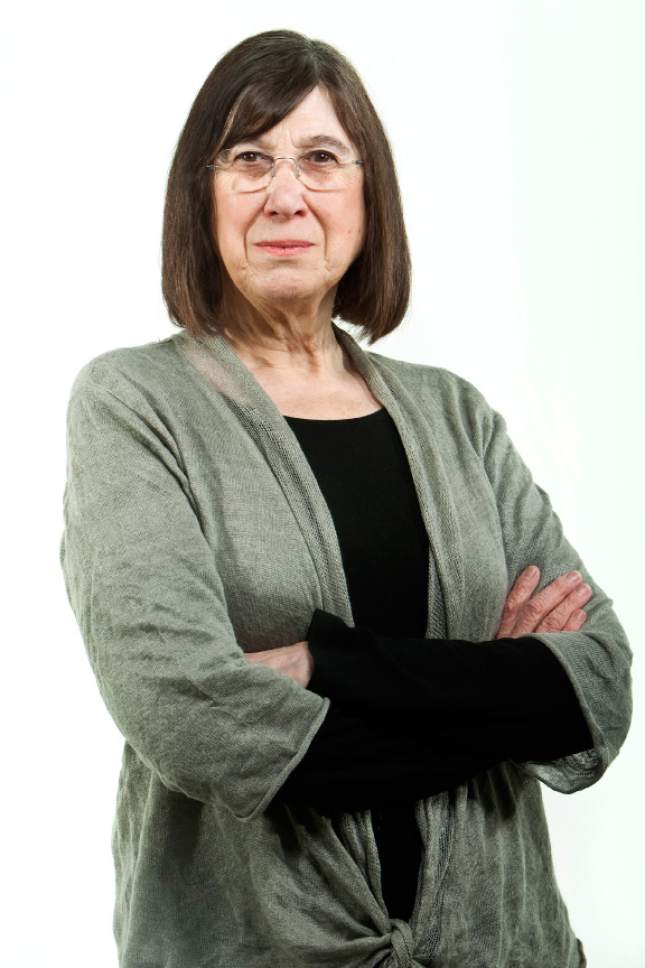This is an archived article that was published on sltrib.com in 2016, and information in the article may be outdated. It is provided only for personal research purposes and may not be reprinted.
Editor's note: Part two of a two-part series.
—
On April 7, 1942, governors and representatives of 10 Western states met with Milton S. Eisenhower, director of the War Relocation Authority (WRA) and other federal officers during a conference held at Hotel Newhouse in Salt Lake City. Their purpose, Richard Reeves wrote in his book, "Infamy," was to "discuss the relocation of the West Coast Japanese from assembly centers to camps in the badlands of their states."
Milton Eisenhower, an educator and brother of a future president, Dwight D. Eisenhower, reminded state officials that two-thirds of the 120,000 incarcerated were Japanese-American citizens and "one-fourth were children under the age of fifteen."
According to the April 7, 1942, Salt Lake Telegram, Eisenhower said evacuees would "not be poured indiscriminately" into the Intermountain region. A "five-point work program" — including "useful" public work, farming, manufacturing, "outside employment and self-supporting communities" — also was planned for the camps' infrastructure.
He emphasized evacuees were "professional people, physicians and lawyers; domestic workers, university students; clerks, stenographers, and draftsmen [who are] cooperative and want to busy themselves and remain in useful production."
Four months after Japan's attack on Pearl Harbor, Eisenhower's desire "to meet the problem in an American way" was outstripped by wartime hysteria, racism and xenophobia.
Defaming the Japanese as "rats," Idaho Gov. Chase Clark agreed to house them "only if they were in concentration camps under military guard." His attorney general, Bert Miller, admonished, "We want to keep this a white man's country."
Wyoming Gov. Nels Smith predicted Japanese "hanging from every tree." Utah Gov. Herbert B. Maw carped if the Japanese were a danger to the West Coast, they would be dangerous for Utah.
Only one governor spoke in defense of Japanese Americans and the Constitution.
Refusing to imprison any Japanese Coloradan, Gov. Ralph Carr said, "I was brought up in a small town where I knew the shame and dishonor of race hatred. If you harm them, you must harm me."
Using the 1940 census to identify Japanese-Americans living in the "war zones of the Pacific frontier," officials arranged for 10 inland internment camps to be built. "Isolation camps" housed "problem inmates" and "enemy aliens." No one was guaranteed due process of law.
Not even American-born Harry J. Ueno.
Sent to live with grandparents in Japan while his family farmed in Hawaii, 16-year-old Ueno returned to the States in 1923. He worked 10-hour days, six days a week, at a Washington lumber mill until the early 1930s, when sawmill workers unionized and shut out the Japanese workers.
After moving to San Francisco, Ueno married, raised three children (who enlisted in the U.S. military) and worked as a buyer/manager for fruit markets that catered to the elite.
"Asparagus from Hawaii in winter, and endives shipped from Belgium," he wrote in "Manzamar Martyr."
On May 10, 1942, Ueno was picked up and incarcerated in Manzanar. Working as a cook for Block 2, he established a mess hall workers' union, kept meticulous records, and vocalized grievances about food shortages, pay inequity and evidence of administrative thievery.
Suspected (with others) of beating up a Japanese-American informer to the FBI, Ueno was jailed without a hearing. A "bloody rebellion" ensued. "Trigger-happy soldiers" killed two inmates. Ueno was sent to the Dalton Wells isolation center, 13 miles north of Moab.
Dalton Wells was an abandoned Civilian Conservation Corps camp. Rundown, primitive, desolate and isolating, family contact was prohibited and mail censored. Prisoners were harassed, bullied into fighting, and then arrested. Civil rights were violated.
Ueno remembered threats by the camp's director. "Anybody could die in here," he was told, and no one "would find his body."
Ueno was imprisoned at Moab's city jail for "talking with other prisoners." On April 27, 1943, Ueno and other dissidents were locked inside an almost airless four-by-six-foot box and loaded onto a flatbed truck. Nearly suffocating during the 11-hour drive to yet another isolation center, and then another, it was months before Ueno made his way home.
—
Eileen Hallet Stone, author of "Hidden History of Utah" and "Historic Tales of Utah," a new compilation of her Living History columns in The Salt Lake Tribune, may be reached at ehswriter@aol.com Sources: Harry Y. Ueno's "Manzanar Martyr," Carey McWilliams' "Prejudice: Japanese-Americans Symbol of Racial Intolerance," and Richard Reeves' "Infamy: The Shocking Story of the Japanese American Internment in World War II."



